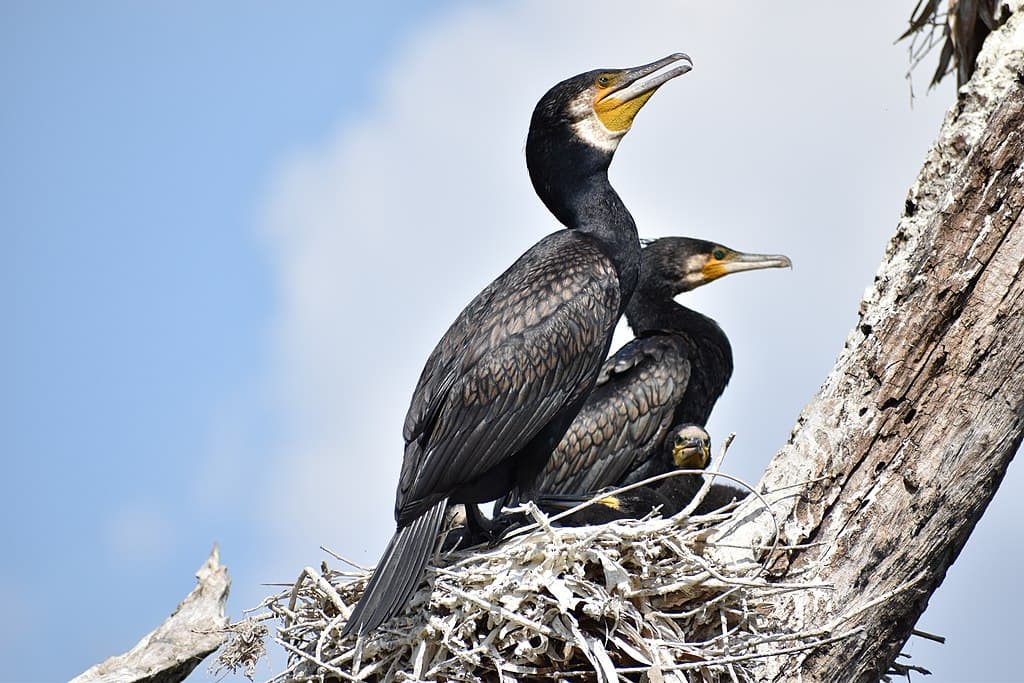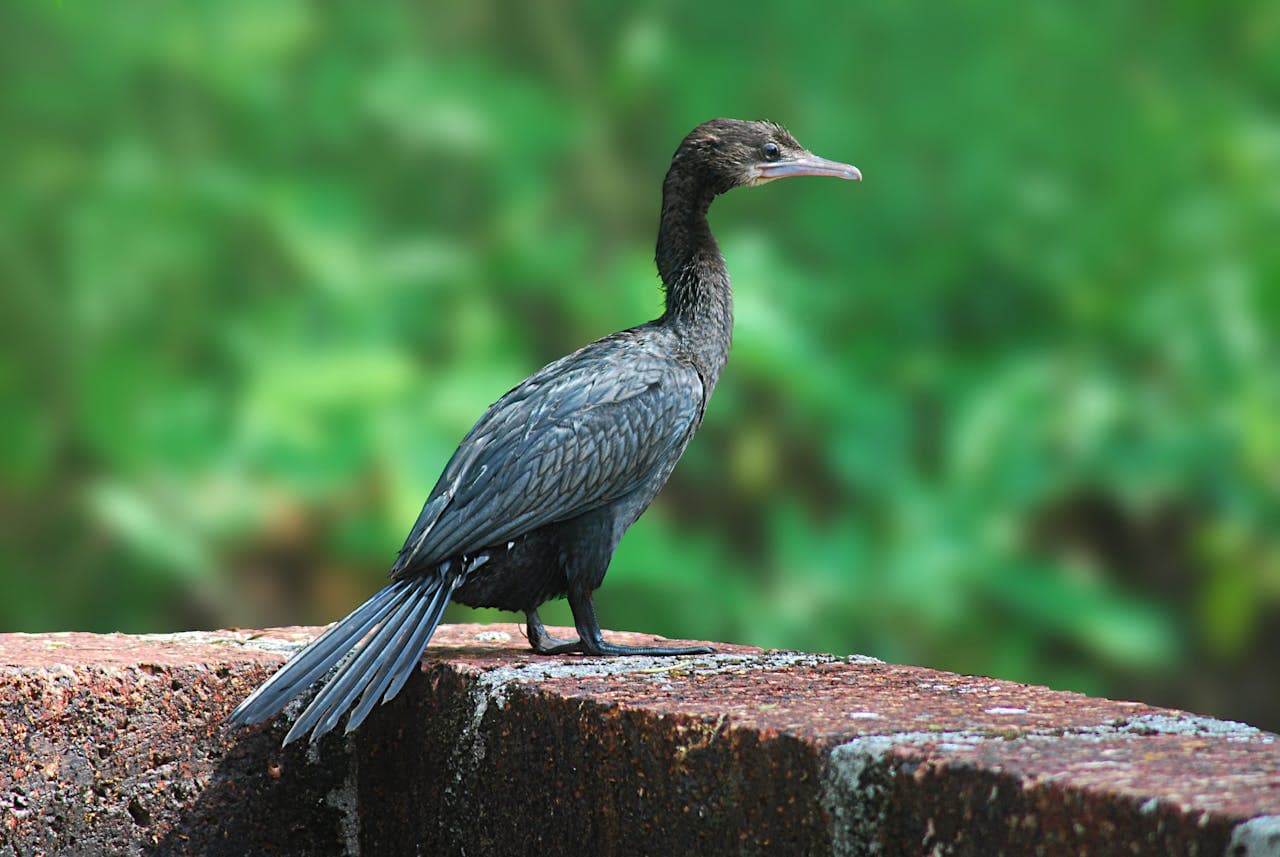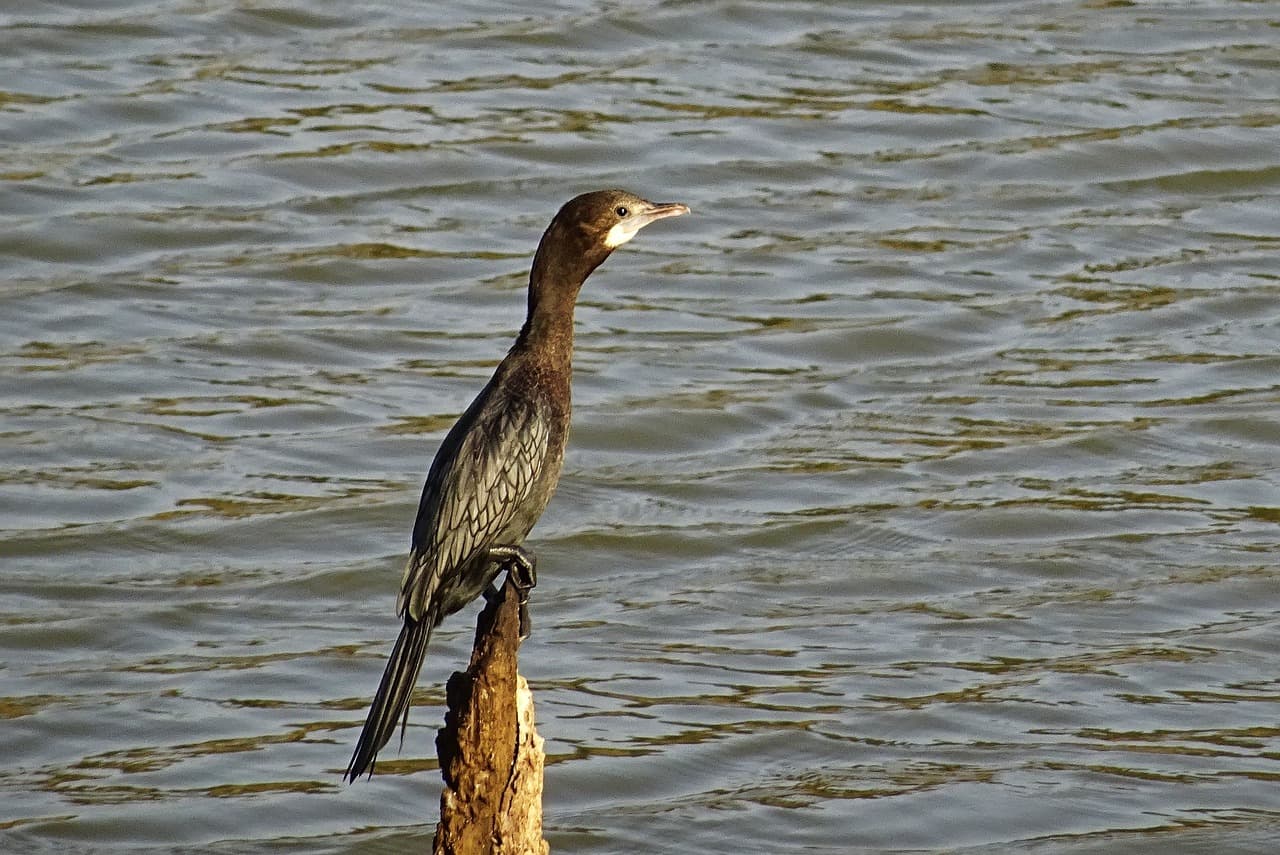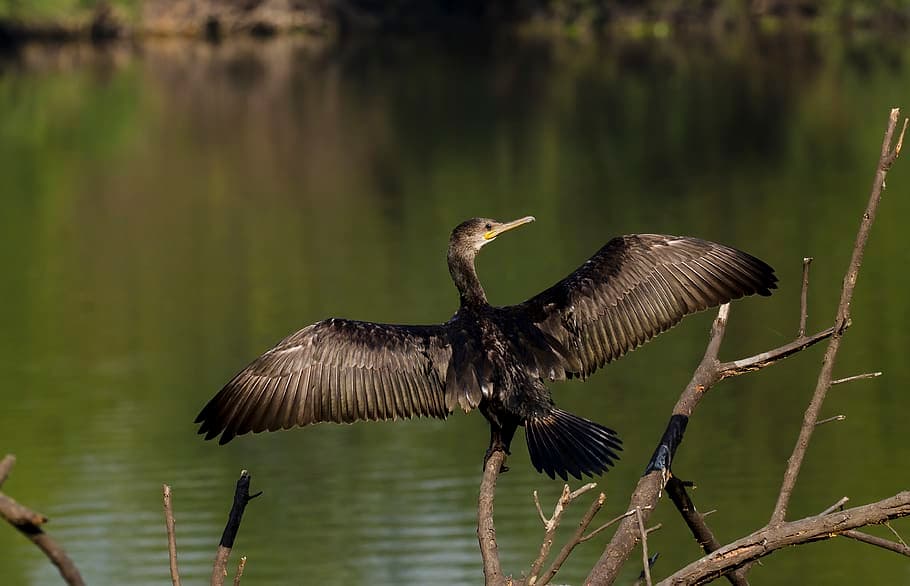Cormorants are aquatic birds that are excellent divers and predators thanks to their special features. The interesting thing is that cormorant is a contraction derived from the word corvus marinus, meaning sea raven. In Khmer language, the word for cormorant literally means water crow. There are around 40 cormorant species in the world, but only 3 are in Cambodia and they are all below.
Great Cormorant (ក្អែកទឹកធំ)

The great cormorant is a large water bird that can be from 70 to 102 centimeters long with a wingspan of 121 to 160 centimeters. A great cormorant has a large bill that assists hunting while its black plumage has a limited waterproof ability. This is why it is common to see them standing on rocks or branches with their wings spread open to dry. Great cormorants are highly social birds that breed in colonies of hundreds of pairs. They often fly in a V-formation, with the birds taking turns leading the group.
This bird species is quite common and widespread, ranging in Africa, Australia, China, Europe, New Zealand, Papua New Guinea, and Southeast Asia. Great cormorants are everywhere from estuaries and freshwater lakes to rivers and seas, with a preference for permanent freshwater. In those areas, they feed on fish, mainly wrasses, that they catch through diving. Besides wrasses, great cormorants also feed on common soles, flathead, and sand smelt as well as aquatic insects, crustaceans, and frogs. These water birds are excellent drivers and their strong beaks play an important part in capturing prey.
Indian Cormorant (ក្អែកទឹកមធ្យម)

The Indian cormorant is a medium-sized cormorant with bronze-brown plumage and a slightly peaked head. The average size of an Indian cormorant is between 51 to 53.5 centimeters long. One of the most distinctive features of this bird is its blue eyes which are different from others. This water cormorant species has a long narrow bill that ends in a hooked tip. Being gregarious and social, they are quite communicative and loud that like to stay in flocks and form mixed breeding colonies.
These water birds are common in the Indian Subcontinent but their population also extends to Burma, Cambodia, and Thailand. In their range, they gregariously fish in inland rivers or large wetlands as well as estuaries and mangroves. The cool part is that they hunt in groups, forming a broad front to drive fish into a corner. Then they make short dives to capture the fish, so everyone gets to feed. Apart from fish, these cormorants also feed on eels, small aquatic creatures, snails, and water snakes.
Little Cormorant (ក្អែកទឹកតូច)

As for the little cormorants, they are slightly smaller than the Indian cormorants with a size of around 50 centimeters. A little cormorant has a narrower and shorter beak, and it lacks a peaked head. Its plumage is brownish with a small whitish patch during the non-breeding season while being entirely black in the breeding season.
The little cormorants are found across Bangladesh, India, lowland Nepal, Pakistan, and Sri Lanka but also in Cambodia, Indonesia, Laos, Myanmar, and Thailand. This cormorant species forages by itself and sometimes in loose groups instead of large flocks like the previous two. Usually, they forage for fishes in lowland freshwater bodies such as large lakes, small ponds, streams, and sometimes coastal estuaries.
Related Post: Fish Eagle Species In Cambodia
